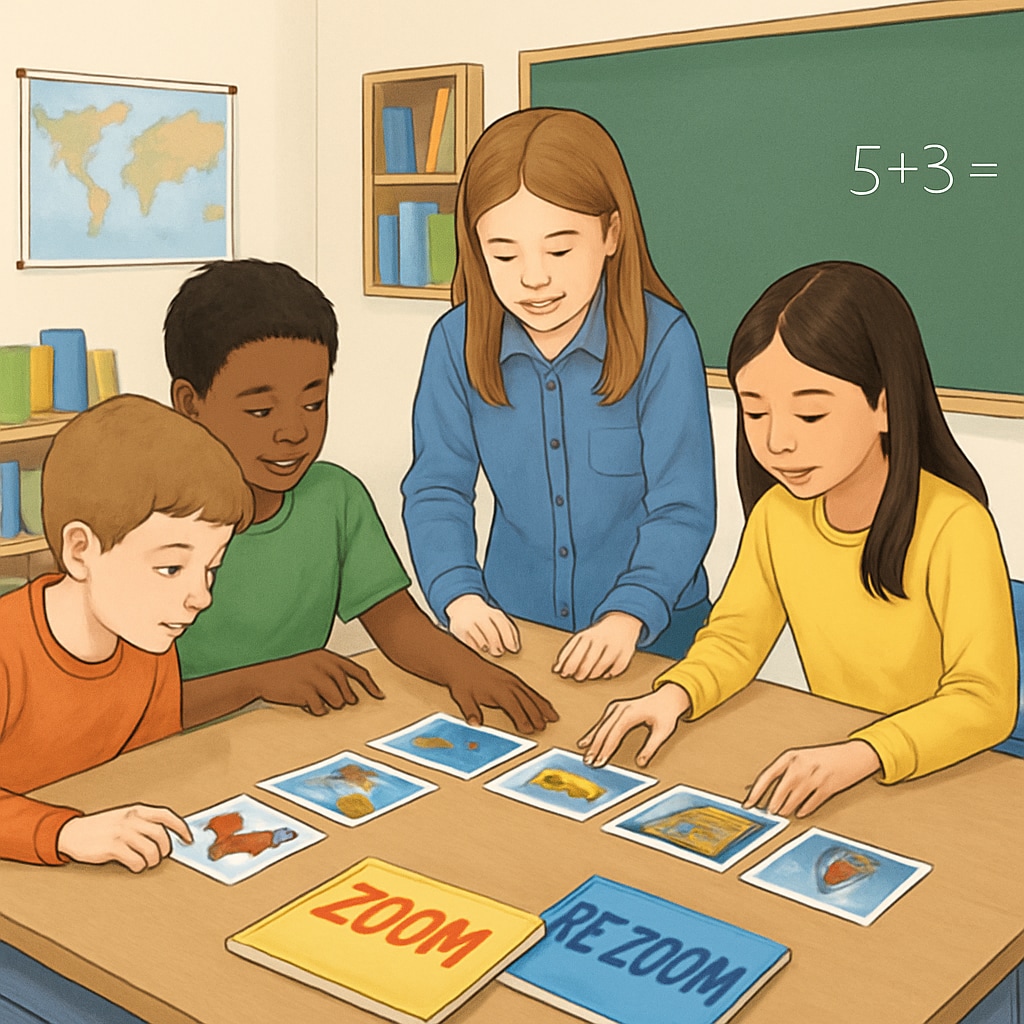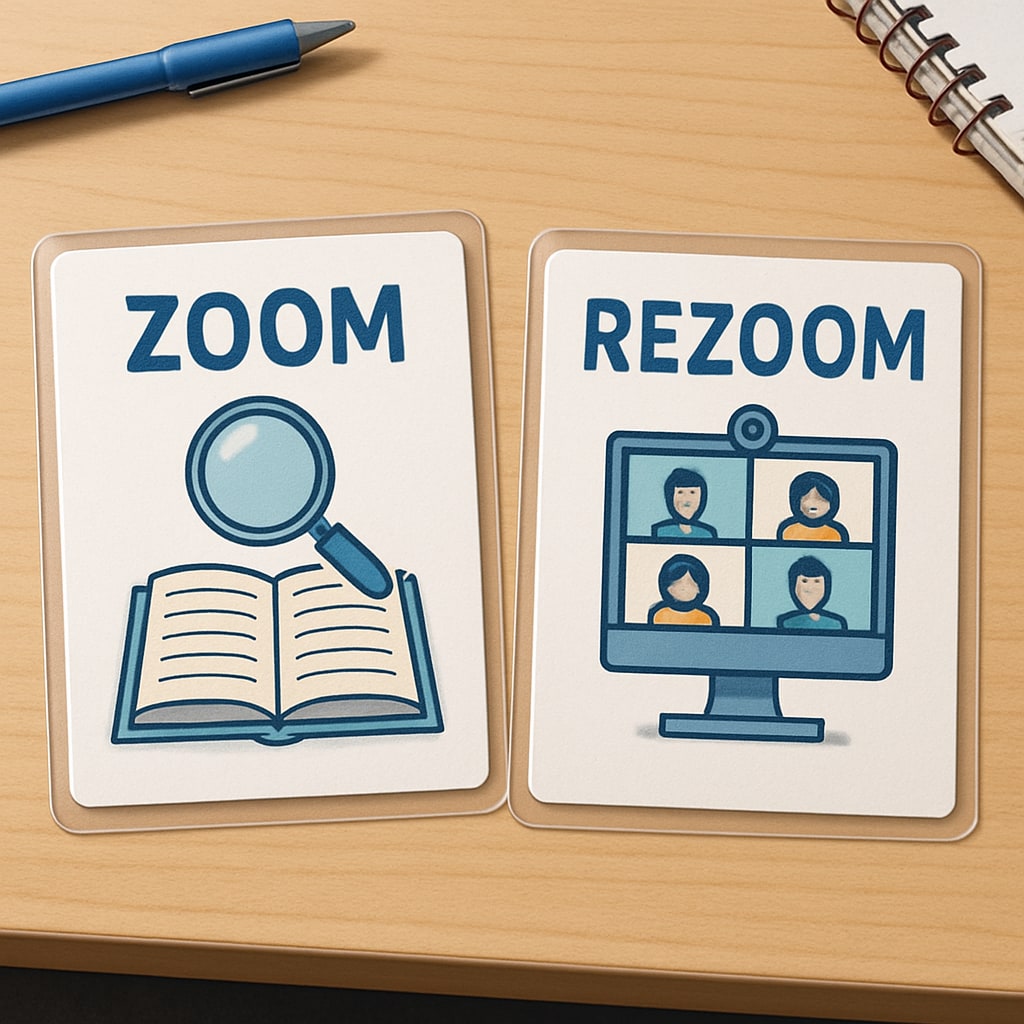Zoom and ReZoom activities, teaching materials, and sequence guides have gained traction as powerful tools in K12 education. These activities are designed to foster critical thinking, collaboration, and sequencing skills through engaging classroom exercises. However, many educators face challenges in effectively implementing them due to unclear activity sequences and preparation methods. In this article, we provide a systematic guide to help teachers optimize the use of Zoom and ReZoom activities, ensuring both student engagement and learning outcomes.
Understanding Zoom and ReZoom Activities in Education
Zoom and ReZoom are interactive storytelling activities based on the books “Zoom” and “ReZoom” by Istvan Banyai. The premise is simple yet ingenious: students work with a series of images that need to be arranged in a logical sequence, revealing a zoomed-out or zoomed-in perspective. These activities are excellent for developing sequencing, communication, and teamwork skills.
For example, Zoom starts with a close-up view and gradually zooms out to give a broader perspective. ReZoom, on the other hand, reverses the approach by zooming in. Teachers often use these activities to encourage students to think critically and make connections between details and the bigger picture.

Challenges in Implementing Zoom and ReZoom Activities
While these activities have significant educational value, their implementation can be tricky. A common challenge involves ensuring the materials are used in the correct sequence. Teachers often report that students lose interest or become confused when the sequence is not properly structured. Additionally, the preparation of teaching materials—such as printing and organizing the cards—can be time-consuming.
Another obstacle is the lack of clear instructions or guidelines for facilitating the activity. Without a systematic approach, educators may struggle to maintain student engagement and achieve the desired learning outcomes.
A Systematic Sequence Guide for Zoom and ReZoom Activities
To address these challenges, we’ve outlined a step-by-step guide to help educators effectively implement Zoom and ReZoom activities:
- Preparation: Begin by printing and laminating the cards for durability. Clearly label each card with its sequence number to avoid confusion.
- Introduction: Explain the activity to students, emphasizing the importance of teamwork and communication. Provide a brief overview of how the cards represent zoomed-in or zoomed-out perspectives.
- Group Formation: Divide students into small groups to encourage collaboration. Each group should receive a shuffled set of cards.
- Facilitation: Monitor the activity, offering hints or guidance as needed. Encourage students to discuss their reasoning and justify their choices while arranging the cards.
- Reflection: Once the sequence is complete, lead a classroom discussion about the challenges faced and lessons learned. Highlight the importance of perspective in problem-solving.

Practical Tips for Success
Here are some additional tips to ensure the success of Zoom and ReZoom activities:
- Time Management: Allocate sufficient time for preparation and execution. The activity can take 30–45 minutes, depending on the group size and complexity.
- Customization: Adapt the activity to different age groups by adjusting the number of cards or complexity of the sequence.
- Integration: Use Zoom and ReZoom as a cross-curricular tool, linking them to subjects like art, storytelling, or geography.
- Feedback: Gather student feedback after the activity to improve future sessions.
The Impact of Structured Zoom and ReZoom Activities
When implemented with a clear sequence guide, Zoom and ReZoom activities can transform classroom dynamics. They not only enhance critical thinking and collaboration but also provide a unique way to explore perspective-taking. Educators who follow a structured approach often find their students more engaged and motivated to participate.
For more information on the educational value of sequencing activities, explore resources like Constructivism on Wikipedia or Active Learning on Britannica.
In conclusion, Zoom and ReZoom activities, coupled with systematic teaching materials and sequence guides, offer a dynamic way to energize classrooms. Their versatility makes them a valuable addition to any K12 educator’s toolkit.
Readability guidance: Use short paragraphs and lists to summarize key points. Ensure clear transitions between sections and maintain active voice for better engagement.


